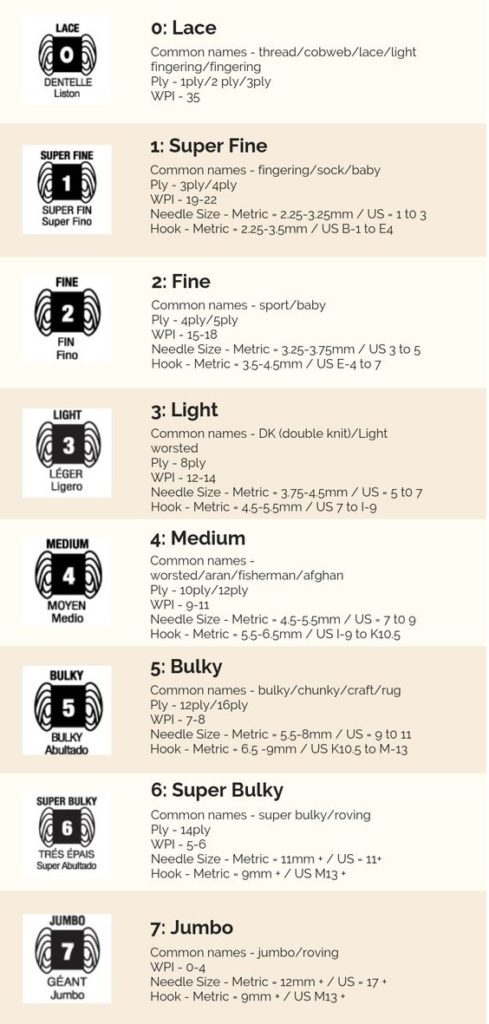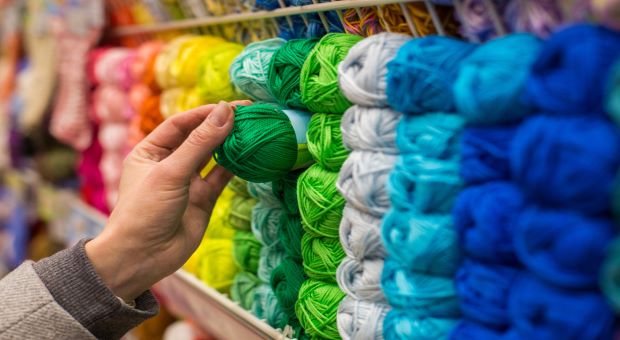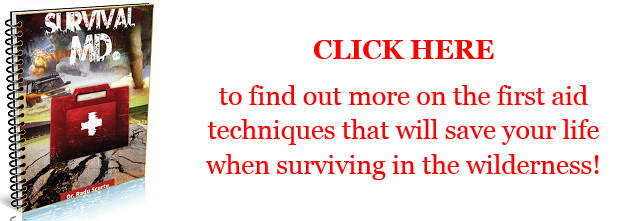There is no getting around the fact that clothes aren’t as durable as they used to be.
To add insult to injury, the cost of clothing is also rising steadily. While you may have a wardrobe full of clothes, or rely on second hand finds, there may come a time when you have to make your own clothes.
One look at the stock market gyrations and possible food shortages caused by bad weather should be enough to make anyone start thinking about how this will impact clothing acquisition. Even if you aren’t concerned about these things, I am sure more than a few readers are tired of clothes that don’t look right, don’t fit right, and don’t wear well in the bargain. In the absence of fabrics or animal skins, you can always look to yarn and threads for making clothes.
Using Yarn to Make Winter Garments
As you may be aware, threads and yarns can be woven to make textiles or fabrics. Unfortunately, it also takes a fairly wide width weaving loom to make something big enough for garments. On the other side of the equation, using yarn with crochet or knitting needles takes up much less space. No matter whether you have a tiny place to live, need to live in your car for a while, or will be traveling, there is always room for knitting or crochet needles and a few skeins of yarn. Here are some ways you can use yarn for making winter garments:
- Conventional Knitting – This is the simplest form of knitting. You can use one color or many colors, as well as make use of thousands of different stitches. At the simplest, you simply knit one row and purl the next, then repeat the pattern until you are done.
- Modular Knitting – Basically, to make use of this type of knitting, you will make smaller shaped pieces and then join them together to form the parts of a garment. Typically, with modular knitting, you will use different colors as well as stitches. When you join the pieces together, they may not form horizontal or vertical rows in relation to each other. You can create everything from arrows to triangles and circles. It is truly endless what you can come up with for modular knitting!
- Cable Knitting – In conventional knitting, you usually don’t move stitches out of their original rows. In cable knitting, however, stitches can be migrated all over the place. During that process, the knitted fabric will take on an additional dimension of bulk and texture. No matter whether you make braids, ropes, or other stitches, the results are always fascinating. They also produce warmer garments than conventional or modular knitting.
- Crochet – If you don’t want to work two needles, then crochet may be of more interest to you. Usually, crochet goes a bit faster, and is more flexible in terms of creating shapes. As with knitting, you will find that there are hundreds to thousands of stitches to choose from. When it comes to winter garments, however, try to avoid stitches that leave big holes or leave the yarn too loose.
Using Yarn to Make Summer Garments
When you make summer garments, you will have to draw a balance between allowing heat to build up and being suitably covered. In general, knitting will not be suitable for either purpose, especially if you are using lace weight yarns. Here are two methods that will work better.
- Tatting – this is the ancient are of making lace. It utilizes a shuttle that has a bobbin in the middle and a hook on one end. While you can get different sized shuttles, the most common is around 2 – 3 inches long. When compared to crochet, you will find that it takes much longer to tat than to crochet. On the other hand, tatting tends to produce stiffer lace with more complex designs.
- Crochet – crochet is usually much easier to learn than tatting. You can also use it to create rounds as well as straight rows. Depending on how tightly you pull the yarn, it is also possible to make ruffles or other dimensional structures.
An Introduction to Yarn Weights
 Today, there are several different weights of yarn[1] ranging from not much thicker than sewing thread to jumbo yarns that are almost an inch thick. For the purposes of making garments, there are only 6 weights that you need to be concerned about.
Today, there are several different weights of yarn[1] ranging from not much thicker than sewing thread to jumbo yarns that are almost an inch thick. For the purposes of making garments, there are only 6 weights that you need to be concerned about.
- Lace Yarn or Crochet Thread – There are several different sizes of crochet thread. In general, the higher the number, the thinner the thread. Higher number yarns are best for making lace with a tatting shuttle, while lower number threads will work fine with crochet hooks. Some people will tell you that using larger sized knitting needles will give you a more open looking effect, however to my eye, these tend to look very messy. If you want an open pattern, go with a crochet hook or tatting shuttle. Both are well suited for making beautiful laces that can be used for making lightweight garments.
- Super Fine – If you want decent socks, under shirts, or under pants, you may or may not be able to use lace yarn. Super fine yarn is a little bit thicker and will give you sturdier garments. Many people use super fine yarn for socks and lightweight shirts. This yarn is often too think or modern tatting shuttles, but it can be used easily with crochet hooks and thinner sized bamboo knitting needles.
- Sport Weight – this yarn works best for baby garments and other lighter weight items. You can also use it to make lightweight shawls and slightly heavier socks or booties.
- Light or Light Worsted – this is more of an in between weighted yarn that I personally don’t recommend often. It is useful for spring and fall sweaters and heavier baby clothes. I tend to prefer either one weight above or one below for garments that will span more seasons or last longer.
- Medium Worsted – Overall, this is my favorite yarn weight for sweaters, shawls, jackets, and just about any other kind of winter wear. It is amenable to many different knitting and crochet methods and will produce warm, comfortable garments. Because it is a little heavier, you will also find the garment increases in size noticeably faster than if you are using light worsted weight yarn.
- Chunky or Bulky – Even though many people use this weight yarn for making hats, I tend to avoid it because a big skein doesn’t go as far as you think it would. It is just as easy, and more economical to use a cable knit design using medium worsted yarn for hats or anything else that needs to have some bulk. Remember, when it comes to winter garments, you get better heat retention with air pockets and layers. Cable knitting a thinner weight yarn will give you almost a double layer garment as well as those highly coveted air pockets. In my experience, trying to do the same with chunky or bulky yarn doesn’t work as well.
The Most Common Types of Yarn
- Acrylic – this is a man made fiber that is durable and will last a fairly long time. Do not wash garments made of acrylic in hot or warm water because they will stretch out and not shrink back to a normal size. Acrylic also tends to not wash well if you use it cable knits. If you do decide to use it for complex knits or crochets, it is best to gently hand wash the garment in cool or cold water.
- Cotton – even though cotton is a natural fiber, you may also have problems with washing the final garment because it will not bounce back as well as wool. Cotton is best used for light weight garments and socks, or for uncomplicated heavier designs.
- Wool – this is usually the best yarn for winter crocheted and knit garments. Even though it is more expensive, cable knits made from wool will last longer. If a wool garment does get out of shape, it can be reshaped easily enough. When buying wool, always make sure it is preshrunk. Otherwise, when you wash the garment for the first time, it will shrink significantly.
- Mixed Blends – Cashmere, silk, cotton, wool, and many other fibers can be blended together to make yarn. Depending on the ratio of each fiber, the yarn may have different strengths and weaknesses. Before you choose a mixed blend yarn for a particular garment, test it out first by making a small square of fabric. For example, if you are planning to make a cable knit sweater, try making a few rows of braids or other stitches. Do not forget to block the fabric and wash it to see how it is impacted.
Learning how to knit, crochet, and tat may seem more like hobbies than tangible survival skills. If you do some research on what it takes to make textiles or fabrics, then you will soon realize that making yarn is easier. From there, in a time of need, being able to make weather appropriate garments from yarn can easily become a marketable as well as useful survival skill.
Resources
[1] https://www.herrschners.com/topic/all+about+yarn+weights.do












































































I guess it’s gonna be animal skins for me. There is no way I can knit my own undies!